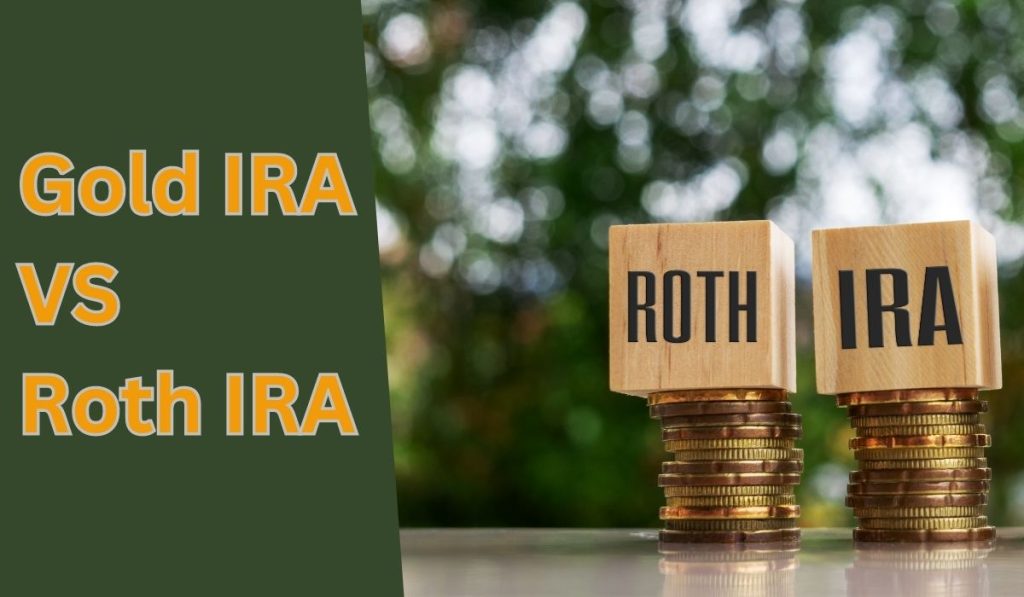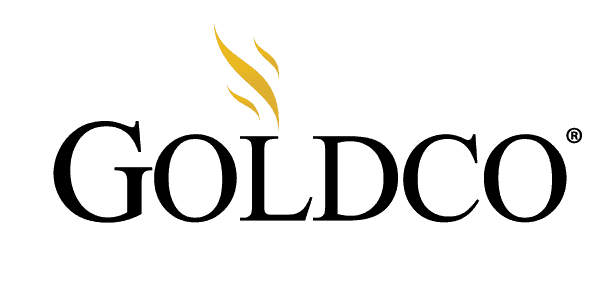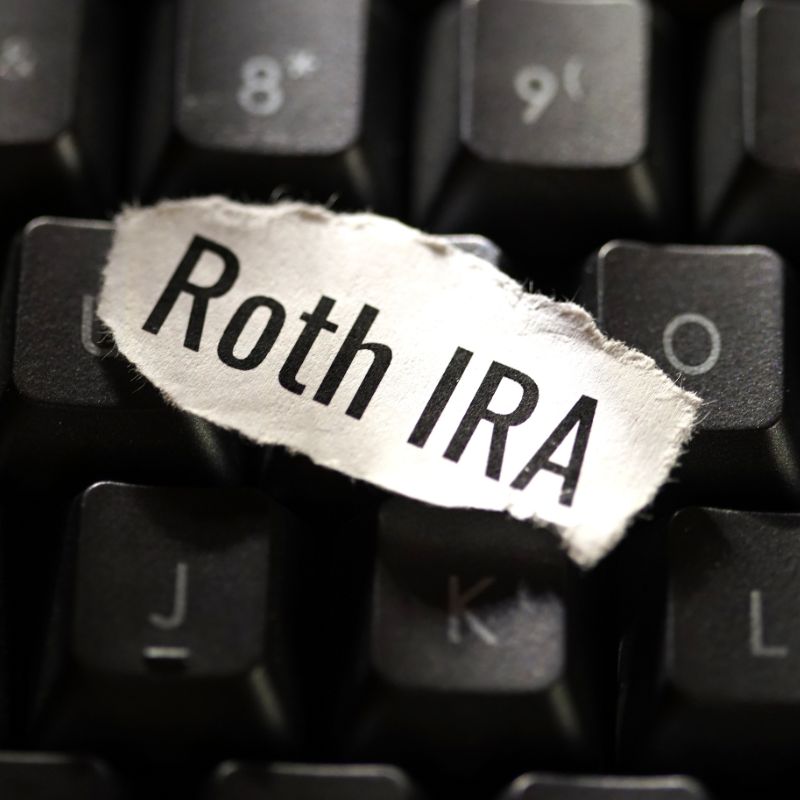 As someone who is well-informed on the various retirement savings options, I want to clarify the differences between Gold IRAs and Roth IRAs. Both options can be attractive to investors, but it’s essential to understand their unique features to make the best decision for your retirement planning.
As someone who is well-informed on the various retirement savings options, I want to clarify the differences between Gold IRAs and Roth IRAs. Both options can be attractive to investors, but it’s essential to understand their unique features to make the best decision for your retirement planning.
A Gold IRA is a specific type of individual retirement account that permits the inclusion of physical gold, providing a safe haven during economic downturns. On the other hand, Roth IRAs primarily deal with more traditional investments, like stocks, bonds, and mutual funds, offering tax-free withdrawals and potentially higher returns.
In essence, while Gold IRAs focus on preserving wealth through tangible gold investments, Roth IRAs offer tax advantages and a wide array of investment choices. When planning your retirement, it is crucial to weigh the pros and cons of each option to determine which IRA best aligns with your financial goals and risk tolerance.
Understanding Gold IRA
A Gold IRA is a self-directed individual retirement account that allows me to invest in physical gold and other precious metals. The key feature of a Gold IRA is that it offers a way to diversify my retirement portfolio beyond traditional investments such as stocks, bonds, and mutual funds.
Setting up a Gold IRA involves choosing a custodian to manage the account and a depository to store the physical gold or other precious metals. It’s important to note that the IRS has specific requirements for the types of gold and precious metals that can be held in a Gold IRA. These must meet a minimum purity standard, typically .995 for gold and .999 for silver, platinum, and palladium.
In terms of contribution limits, a Gold IRA follows the same limits as a traditional or Roth IRA, which is $6,000 in 2022, or $7,000 if I am age 50 or older. One key aspect to consider is that a Gold IRA often comes with higher fees than a traditional or Roth IRA due to the storage and management of physical precious metals. This can include setup fees, annual custodial fees, and storage fees.
Investing in a Gold IRA allows me to potentially benefit from the long-term appreciation of gold and precious metals as a hedge against inflation and economic uncertainties. However, it’s crucial to carefully weigh the advantages of holding gold in my retirement account against the potential drawbacks such as higher fees and the lack of liquidity compared to more traditional investment options. You can see the full list of Gold IRA alternative options here.
Understanding Roth IRA
When it comes to planning for retirement, there are several investment options available. One such option is the Roth Individual Retirement Account (IRA). As a knowledgeable and confident investor, I want to share some key aspects of Roth IRAs to help you understand how they work.
A Roth IRA is a type of retirement account where contributions are made with after-tax dollars, unlike traditional IRAs where contributions are made with pre-tax dollars. This means that I pay taxes on the money I contribute to a Roth IRA today, but my qualified withdrawals in retirement are tax-free. This can be particularly advantageous if I expect to be in a higher tax bracket during retirement.
With Roth IRAs, there are certain rules and limitations to be aware of. First, there are income limitations on who can contribute to a Roth IRA. For 2023, the modified adjusted gross income (MAGI) phase-out range for singles is $129,000 to $144,000, and for married couples filing jointly, it’s $204,000 to $214,000. If your income is above these limits, you may not be able to contribute directly to a Roth IRA.
Furthermore, the annual contribution limit for a Roth IRA in 2023 is $6,000 for those under 50 and $7,000 for those 50 and older. It’s important to note that I cannot contribute more than my earned income for the year.
Unlike traditional IRAs, Roth IRAs do not have Required Minimum Distributions (RMDs), which means I am not obligated to withdraw a certain amount of money once I reach age 72. This allows me to continue contributing to my Roth IRA and let my investments grow tax-free, as long as I have earned income.
Additionally, the Roth IRA offers flexibility when it comes to withdrawals. While it is generally recommended to wait until age 59 ½ to withdraw funds without penalty, there are exceptions. For example, I can withdraw my contributions (but not earnings) at any time without penalty or tax, making it a useful financial tool in emergencies or for other financial goals.
In conclusion, the Roth IRA is a versatile and tax-effective retirement savings option that can help secure a comfortable retirement. By understanding the rules and benefits associated with a Roth IRA, I can make informed decisions about my retirement planning strategy.
Eligibility Requirements
Gold IRA Eligibility
In order to open a Gold IRA, I need to meet certain eligibility requirements. Firstly, I must have earned income, such as wages or self-employment income. This allows me to contribute to a self-directed Gold IRA which invests in physical gold, as well as other precious metals. There is no upper-income limit for contributions to a Gold IRA, making it accessible to people with varying income levels. However, the contribution limits vary depending on my age – for 2021, the limit is $6,000 if I am under 50 years old, and $7,000 if I am 50 or older.
It is important to note that a Gold IRA often comes with higher fees than a traditional or Roth IRA, which may impact my overall returns on investment. The higher fees are due to the specific requirements of holding physical gold, such as storage and insurance costs.
Roth IRA Eligibility
On the other hand, for me to be eligible for a Roth IRA, my income must be below a certain threshold. For the tax year 2023, this limit is $153,000 for individuals and $228,000 for married couples filing jointly. Unlike a Gold IRA, Roth IRA contributions are made with after-tax dollars, and my qualified withdrawals are tax-free.
The contribution limits for a Roth IRA are the same as those for a Gold IRA – $6,000 per year if I am under 50, and $7,000 if I am 50 or older. It’s crucial for me to be aware of the income limits, as they may change from year to year based on inflation adjustments. If my income exceeds the specified limits, I may not be able to make direct contributions to a Roth IRA. However, I can still explore different strategies like a backdoor Roth IRA conversion.
In summary, both Gold and Roth IRAs have their own set of eligibility requirements, which I must consider before deciding to open either account. While a Gold IRA has no income limits, it often comes with higher fees. A Roth IRA has income limitations but offers tax-free qualified withdrawals in retirement. As a potential investor, I need to assess the suitability of each option in the context of my personal financial situation and investment goals.
Tax Implications
Gold IRA Taxation
In my experience with Gold IRAs, they function similarly to traditional IRAs in terms of tax implications. Contributions to a Gold IRA are made with pre-tax dollars, meaning that you don’t pay taxes on the money you invest at the time of the contribution. However, when you withdraw funds during retirement, those withdrawals are taxed as ordinary income.
It’s also important for me to note that if you take a distribution from your Gold IRA in the form of physical gold or other precious metals, you might be subject to additional taxes or penalties. To avoid such scenarios, most investors opt to liquidate their assets and withdraw the proceeds in cash.
Roth IRA Taxation
On the other hand, Roth IRAs have a different tax structure. When I contribute to a Roth IRA, I use after-tax dollars, meaning that I’ve already paid taxes on the income I’m investing. The advantage of this is that when I withdraw funds during retirement, those withdrawals are tax-free, as long as I meet certain qualifications (e.g., being at least 59.5 years old and having the account for at least five years).
Though Roth IRAs are not specifically designed for holding gold or other precious metals, some creative investors might find ways to include these assets in their portfolios. As long as I adhere to the Roth IRA regulations and tax laws, holding precious metals into a Roth IRA would follow the same tax-free withdrawal rules.
Investment Options and Diversification
Gold IRA Investment Choices
In a Gold IRA, I can invest in various forms of physical gold, such as coins, bullion, and bars, which help protect my retirement nest egg from inflation and market volatility. These precious metals must meet specific purity requirements, as laid out by the IRS. For example, eligible gold must have a minimum purity of 99.5%, while silver requires 99.9% purity. Some common gold coins eligible for a Gold IRA include American Gold Eagles, Canadian Gold Maple Leafs, and Australian Gold Kangaroos.
In addition to gold, I can diversify my Gold IRA with other precious metals such as silver, platinum, and palladium. These investments add diversity to my portfolio and help mitigate the risks associated with traditional asset classes like stocks and bonds.
Roth IRA Investment Choices
In a Roth IRA, I have a broader range of investment options. Along with traditional investment choices like stocks, bonds, and mutual funds, I can also invest in exchange-traded funds (ETFs), certificates of deposit (CDs), and real estate investment trusts (REITs). With a Roth IRA, I can tailor my investments to my specific risk tolerance and financial goals.
The primary advantage of a Roth IRA is that I’ve already paid taxes on my contributions, so my earnings grow tax-free, and I won’t have to pay taxes on my withdrawals in retirement.
In summary, a Gold IRA allows me to focus on precious metals, providing portfolio diversification and protection against inflation, while a Roth IRA offers a wider variety of investment options, catering to different financial needs and risk appetites.
Fees and Expenses
Gold IRA Fees
In a Gold IRA, I must consider various fees, such as setup, storage, custodial fees, and commissions. Since a Gold IRA holds physical gold, it often comes with higher fees than a traditional or Roth IRA investing solely in stocks, bonds, and mutual funds. There might also be a higher custodian fee for ensuring the storage and security of my investment.
- Setup fees: I pay an initial setup fee when opening a Gold IRA account.
- Storage fee: Ongoing storage fees are associated with the secure depository holding my physical gold.
- Custodial fee: A custodian is responsible for managing the account and ensuring its compliance with tax laws. I need to pay a fee to my account’s custodian.
- Commissions: The cost of buying and selling gold within my IRA, including the dealer’s markup when purchasing gold, is another fee to consider.
Roth IRA Fees
When it comes to Roth IRA fees, they typically include account maintenance fees, commissions, and expense ratios associated with the chosen investments. Though these fees can add up, they are generally lower than those associated with a Gold IRA.
- Maintenance fee: I pay an account maintenance fee with my Roth IRA, covering administrative costs.
- Commissions: When buying and selling stocks, bonds, or mutual funds in my Roth IRA, there could be a transaction fee.
- Expense ratios: While investing in mutual funds or exchange-traded funds (ETFs), I need to keep an eye on the expense ratios, as they can vary between different funds and investment types.
In conclusion, the fees and expenses in a Gold IRA and a Roth IRA differ significantly, with Gold IRA fees generally being higher due to the addition of physical gold within the account. As an investor, I must carefully evaluate these costs when deciding between the two investment choices to ensure they fit my personal financial goals and preferences.
Withdrawal Rules
Gold IRA Withdrawals
From my understanding, a Gold IRA functions differently from a traditional IRA. It allows you to hold physical gold and other precious metals in your retirement account. When it comes to withdrawals, the process may involve selling the metals and withdrawing the proceeds, or taking an in-kind distribution where you receive the physical metals directly. However, it’s important to keep in mind that these withdrawals may be subject to taxes and penalties if taken before the age of 59 ½, similar to traditional IRAs.
For instance, early withdrawals from a gold IRA may be subject to a 10% penalty and will also be regarded as ordinary income, which is taxable accordingly. That said, every individual’s tax situation is unique, so consulting a tax advisor for personalized advice is always a good move.
Roth IRA Withdrawals
On the other hand, Roth IRAs follow a different set of rules, allowing more flexibility in terms of withdrawals. I know that, in general, you can withdraw your contributions from a Roth IRA at any time without incurring penalties or taxes. The reasoning behind this is that you’ve already paid taxes on the contributions themselves.
However, a crucial point to remember is that earnings in a Roth IRA have specific withdrawal rules. These can only be withdrawn tax-free and penalty-free once you’ve reached the age of 59 ½, and after having owned the account for at least five years. If these conditions don’t apply, the withdrawals may be subject to taxes and a potential 10% penalty.
In conclusion, I hope this breakdown of the withdrawal rules for both Gold IRAs and Roth IRAs has been helpful. It’s essential to understand the differences between these two retirement accounts and the tax implications when considering withdrawing funds. Speaking with a financial professional for personalized advice is always recommended before taking any action.
Pros and Cons
Gold IRA Advantages and Disadvantages
One major advantage of a Gold IRA is its ability to protect investors from market volatility. By investing in physical gold, I can create a hedge against inflation and market fluctuations, providing a level of stability for my portfolio.
Additionally, gold has historically maintained its value over time, making it a reliable store of wealth. This can be especially important during times of economic uncertainty when traditional stocks and bonds may lose value.
However, there are some disadvantages to consider. The IRS imposes strict storage requirements for gold held in an IRA, meaning I cannot physically possess the gold. Instead, it must be stored in an approved depository, which can come with additional fees.
Moreover, Gold IRA contribution limits are the same as traditional and Roth IRAs, at $6,500 (or $7,500 if I’m 50 or older) for the tax year 2023. This limits my ability to invest heavily in gold through my IRA.
Roth IRA Advantages and Disadvantages
Roth IRAs offer a unique tax advantage: qualified withdrawals are tax-free in retirement. This means if I contribute to a Roth IRA, my after-tax dollars grow tax-free, and I won’t owe taxes on the earnings when I retire.
Additionally, Roth IRAs have no required minimum distributions (RMDs) during my lifetime, providing greater flexibility for my retirement planning. I can choose when and how much to withdraw, giving me more control over my finances.
On the downside, Roth IRA contributions are not tax-deductible, unlike traditional IRA contributions. This means I don’t get an immediate tax break on my contributions.
Also, Roth IRAs have income limits for eligibility. In 2023, if my modified adjusted gross income (MAGI) exceeds certain thresholds, I will not be able to make direct contributions to a Roth IRA, potentially limiting its accessibility for higher-income individuals.
Making the Decision
When considering the difference between a traditional Gold IRA and a Roth Gold IRA, I must take into account my personal financial situation, goals, and tax implications. While both types of IRAs allow for investment in physical gold and offer tax advantages, the main difference lies in the timing of tax benefits.
In a traditional Gold IRA, my contributions are tax-deductible, which means I can lower my taxable income in the year I make the contribution. However, when I withdraw funds during retirement, those withdrawals will be taxed as ordinary income. This option might be favorable if I believe my tax bracket will be lower in retirement than it is now.
On the other hand, a Roth Gold IRA allows me to pay taxes on my contributions upfront, while withdrawals during retirement are tax-free. This is a great option if I expect to be in a higher tax bracket during retirement or prefer the peace of mind knowing taxes won’t reduce my income during my golden years.
It’s essential to carefully weigh the pros and cons of each IRA type and consider factors such as my current income, tax bracket, expected retirement income level, and the potential appreciation of gold as an investment. A proper evaluation of these factors can help me make an informed decision, taking into account my long-term financial goals.
Additionally, seeking the advice of a qualified financial advisor can be beneficial in making a well-informed decision about whether a traditional Gold IRA or a Roth Gold IRA is right for me. A financial expert can guide me in choosing the IRA that best fits my needs and retirement objectives. By ensuring I’ve accurately assessed my specific situation, I can feel confident in selecting the right strategy for my golden years.
Frequently Asked Questions
What are the main advantages and disadvantages of Gold IRAs?
As a gold IRA investor, I can tell you that one of the main advantages of this retirement vehicle is its potential hedging against inflation, market volatility, and economic uncertainty. Gold has historically maintained its value over time and can provide a much-needed diversification in your investment portfolio. However, there are disadvantages including higher fees and storage expenses compared to traditional or Roth IRAs, as well as the complexity of managing physical gold assets.
How do Gold IRAs and Roth IRAs differ in terms of taxation?
From my understanding, the main difference in taxation between a gold IRA and a Roth IRA lies in when taxes are paid. In a traditional gold IRA, contributions may be tax-deductible but future withdrawals are generally taxed. In contrast, a Roth IRA allows contributions to be made using after-tax dollars, meaning that qualified withdrawals in retirement will not be subject to taxes, as long as certain conditions are met.
Which investment type is preferable for long-term retirement planning?
Personally, I believe that the preferable investment type depends on your individual financial situation, risk tolerance, and retirement goals. A gold IRA could be a valuable diversification tool, particularly for investors seeking a hedge against inflation or economic instability. On the other hand, a Roth IRA offers tax-free growth, which may be more appealing to some investors. Your choice should reflect your current and anticipated financial situation, as well as your comfort level with various types of investments.
What are the fees associated with Gold IRAs compared to Roth IRAs?
In my experience, the fees for gold IRAs tend to be higher when compared to traditional or Roth IRAs. These fees typically include setup and administrative fees, as well as storage and insurance costs for holding physical precious metals. Additionally, there may be higher transaction fees when buying or selling gold assets. Roth IRAs typically have lower administrative fees and no storage costs, as they hold traditional investment vehicles like stocks and bonds.
What types of assets are allowed within these two types of retirement accounts?
I have found that a gold IRA primarily allows investment in physical gold assets, such as bullion bars and certain coins. Some gold IRAs may also permit investment in other precious metals, like silver, platinum, and palladium. Conversely, a Roth IRA allows for a more diverse range of assets, including stocks, bonds, mutual funds, and other traditional investments. It is worth noting that while it is possible to invest in gold indirectly through a Roth IRA, this would typically involve purchasing shares of an exchange-traded fund (ETF) or mining stocks, rather than holding physical gold.
How do distribution rules vary between Gold IRAs and Roth IRAs?
As an investor, I know that gold IRAs and Roth IRAs have different distribution rules. Gold IRAs are subject to required minimum distributions (RMDs), which mandate that you begin taking withdrawals at age 72, similar to traditional IRAs. On the other hand, Roth IRAs do not have RMDs, allowing you to keep your investments growing tax-free beyond age 72 if you wish. Furthermore, as mentioned earlier, withdrawals from a Roth IRA are generally tax-free, as long as specific conditions are met.




